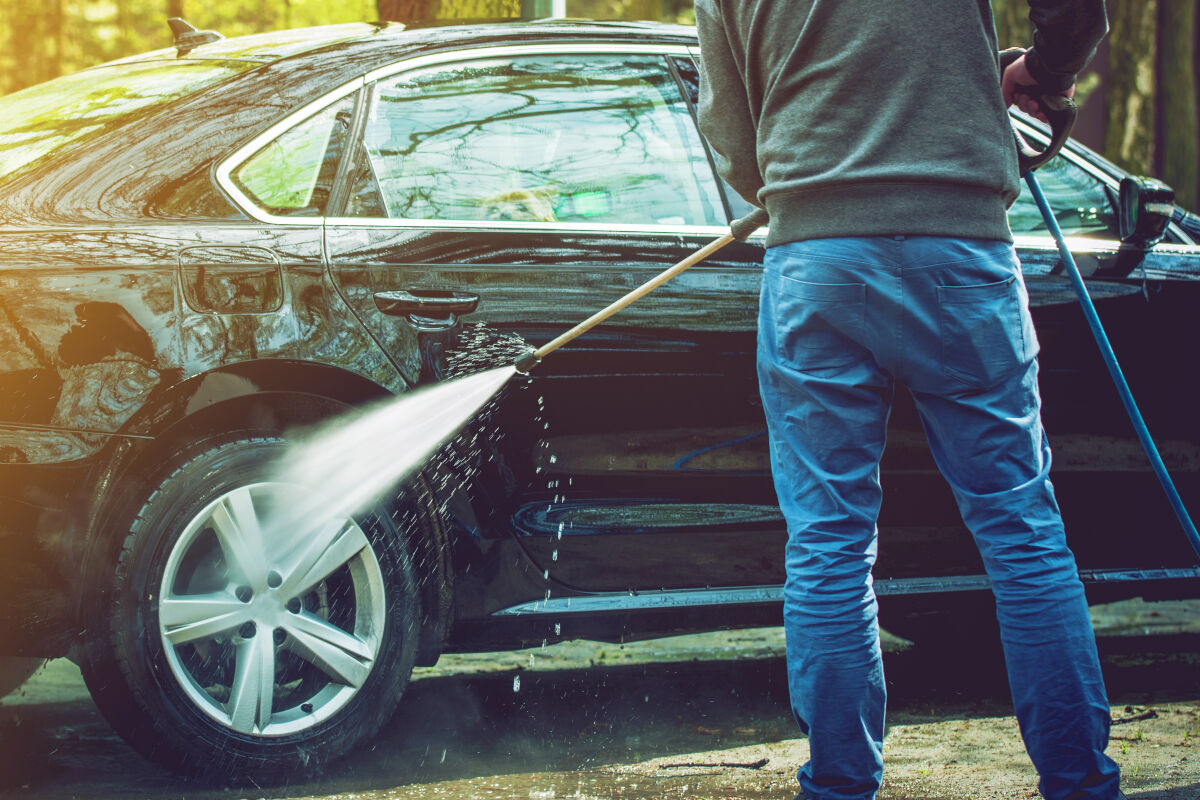Many of us enjoy having a clean and shiny car, and pressure washers are a useful tool for achieving that. However, before using a pressure washer on your car, it is important to be aware of two key factors: pressure level and nozzle tip size. To prevent damaging your car’s paint job, choose a pressure washer with settings between 1200 and 1900 pounds per square inch (PSI).

Nozzle tips come in different colors to indicate their size. For cleaning wheels and heavily soiled areas, use a 25-degree (green) tip. A 40-degree (white) tip is suitable for washing the rest of the car’s surfaces.
Materials needed:
Garden hose connected to water source
Pressure washer
Towels
Special detergent formulated for pressure washers
When using a pressure washer to clean your car, it is important to use the correct pressure level and nozzle tip size. Begin the pre-wash by selecting a 40-degree nozzle tip and starting at the top of the car, working your way down and removing any debris from the roof, hood, trunk, side panels, wheels, hubcaps, and wheel wells. Avoid spraying directly into the front grill as this may damage the radiator. Instead, spray downward at a 45-degree angle.
Soap and Suds:If your pressure washer has a soap tank, be sure to check the water-to-soap concentrate ratio and fill the tank with the diluted soap solution. If your pressure washer lacks a soap tank, apply soap by hand with a rag or sponge. Set your pressure washer to the soap setting or use a soap nozzle tip. Apply soap over the whole vehicle, allowing it to sit for at least five minutes. If you’re washing your car in direct sunlight, rinse off the soap before it dries.
Rinse Time:Rinse the car thoroughly by switching the nozzle back to a 40-degree tip or setting the pressure washer to water output. Start from the top of the car and work your way down, rinsing off all the soap thoroughly, repeating two or three times until the vehicle is completely rinsed.
Drying Time:Dry the car with a hand towel, soft cloth, or shammy to eliminate water spots when air drying. Avoid gravel surfaces as the kicked-up stones could damage the paint or crack the windows. Park your vehicle on concrete or blacktop surfaces instead.
0 comment
If you notice any damage or scratches after pressure washing your car, take it to a professional for repair.
My hair is a mess today.
Before starting, make sure to read the manufacturer’s instructions for your pressure washer and choose the appropriate nozzle and pressure setting for your car.
Begin by rinsing your car with a low-pressure setting to remove any loose dirt or debris.
Use the pressure washer to blast away any remaining dirt and grime, paying special attention to the wheels and undercarriage.
This phone charger is not working well.
I wish I could take a walk outside right now.
Overall, pressure washing can be a useful tool for keeping your car clean, but it should be used with caution and care to avoid any damage or problems.
Avoid using a pressure washer on any areas of the car that are damaged or have loose paint or rust, as this can make the damage worse.
Pressure washing your car too frequently can also damage the paint and finish, so it’s best to limit it to occasional deep cleans.
Dry your car using a soft, clean towel or chamois to avoid leaving water spots or streaks.
Pressure washing your car can be an efficient way to clean it, but it’s important to use the right technique and equipment to avoid damaging your car’s paint and finish.
I can’t decide what to wear today.
Apply a car shampoo using a sponge or brush, and then use the pressure washer to rinse off the suds, again using a low-pressure setting.
I have a meeting later that I’m not looking forward to.
I’m feeling a bit lonely today.
I just got a new email.
Be careful not to get too close to the car’s surface or use too much pressure, as this can cause damage to the paint and finish.
Make sure to rinse your car thoroughly after pressure washing to remove any remaining soap or dirt.